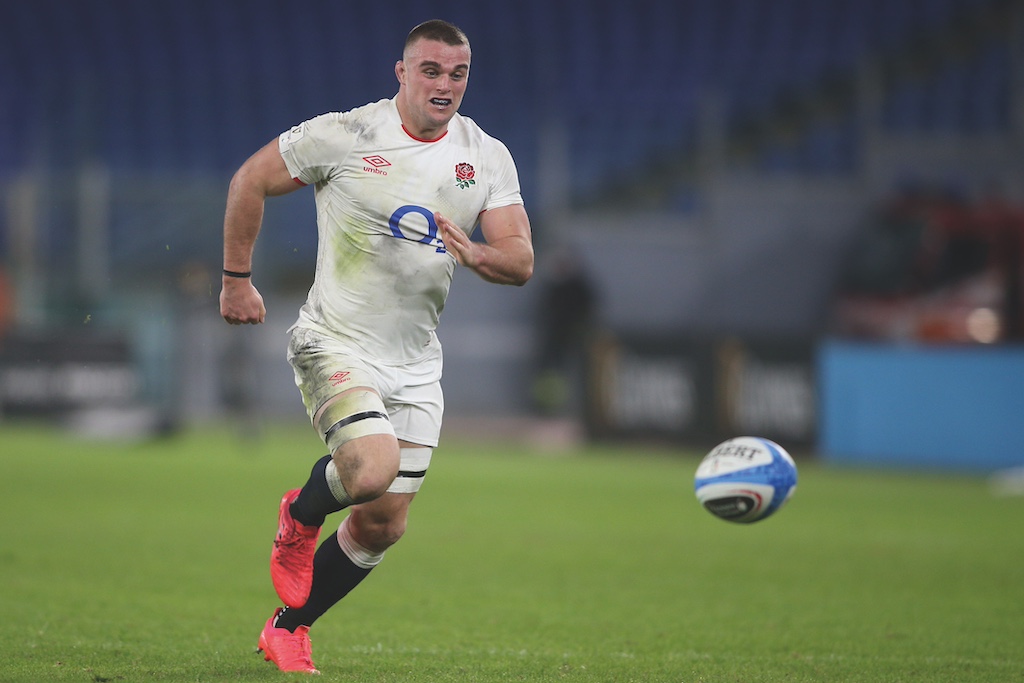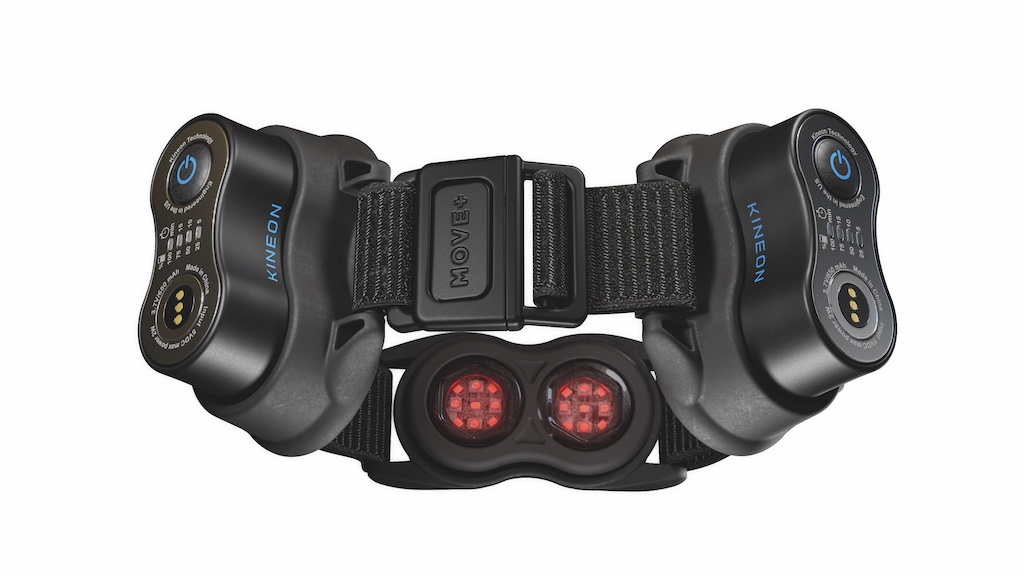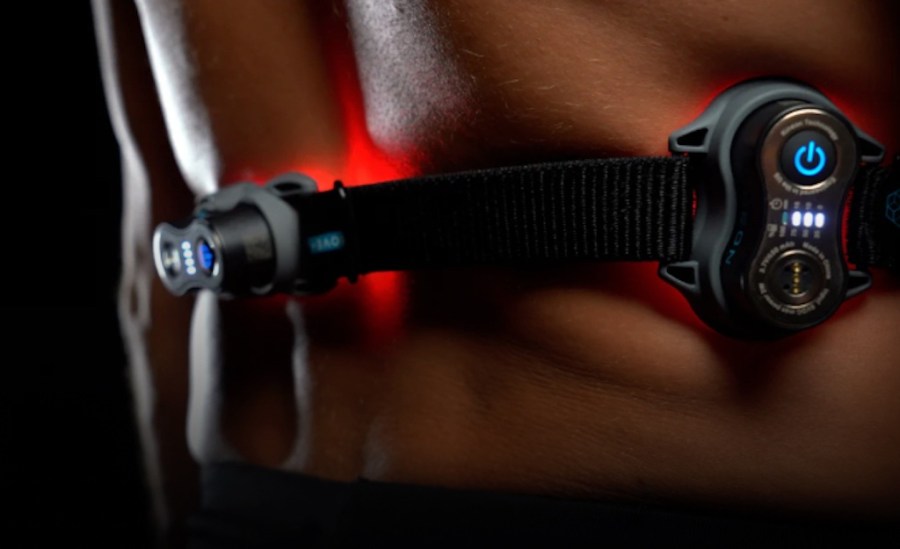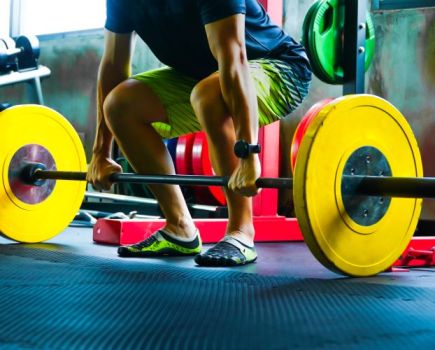Red light therapy promises accelerated recovery and has become a key tool for professional athletes looking to get back into action as soon as possible. Here’s all you need to know.
Ben Earl, Saracens and England rugby star, was hobbling off the pitch on crutches before the match against Harlequins could even begin in November 2023. A medical scan revealed that Earl had damaged the cartilage in his right knee during the warm-up. Within a few days, he was lying on the operating table.
Earl had suffered a damaged meniscus, which can require up to six months to recover from. Fortunately, an operation can reduce the recovery time required. And courtesy of a luxury performance centre in London, Earl was hiding an innovative trump card up his sleeve: a mysterious high-tech form of recovery that has grown in popularity among athletes over the past decade: red light therapy.
How does red light therapy work?
Red light therapy, also known as ‘photobiomodulation’, refers to the practice of shining red to near-infrared light on a specific body part to stimulate recovery. Scientists aren’t absolutely certain about how it works. But the widely accepted theory is that, when the photons of light enter cells in the targeted area, they stimulate the mitochondrion, otherwise known as the ‘power plants’ of cells. These mitochondrion then crank up their production of ATP, which provides energy for cellular processes. If the cells operate faster, then the tissue repairs itself quicker too.
Although red light therapy has only become popular in the sports world over the last few years, the concept has been around for over 100. The Danish scientist Dr Niels Finsen started experimenting with sunlight as a method of treatmentin the late 19th century after developing a form of dementia. Following his instinct, he manufactured a device that could concentrate the light on small areas. He used it on the lesions of patients suffering from a form of tuberculosis. According to his results, his treatment cured over half of his patients. Dr Finsen won the Nobel Prize in Medicine and Physiology for the discovery.
Over time, scientists learnt that light with wavelengths in the range of red to near-infrared (invisible to the human eye) was optimal for stimulating recovery. They’ve performed studies that supported its use to treat a variety of superficial conditions like acne, hair loss, and wounds. After 1960, when an American engineer manufactured the first laser, they also discovered that they could even treat cells deeper within the body. The lasers were more powerful than standard lights and could penetrate beneath the surface of the skin. Regulatory organisations, like the US Food and Drugs Administration, approved them for use in clinical settings just after the turn of the millennium. This treatment then became known as ‘low level laser therapy’, ‘low-power laser therapy’, or ‘cold laser therapy’.

Using red light therapy in sports
Importantly, in sport, research has also shown that red light and laser therapies can accelerate the recovery of musculoskeletal injuries, like Earl’s meniscus damage. In 2016, American scientists published a paper in the journal Laser Therapy showing that red light therapy using an LED could more than halve the time it took for athletes to return to play after experiencing various musculoskeletal injuries like sprains and ligament damage. Research performed by NASA found that US Navy crew suffering from musculoskeletal injuries recovered 40% faster, on average, after receiving red light therapy.
Research has also shown that red light therapy can be effective as a pain relief treatment in both acute and chronic conditions. In one study of men experiencing chronic lower-back pain, red light therapy using lasers reduced the participants’ pain levels and increased their range of motion. Another (small) study on college football players with sprained ankles found that the size of the swelling had reduced significantly within one, two, and three days after receiving red light therapy, when compared with a control group.
It was these results that led Ben Earl into The Body Lab, London’s specialist ‘red light room’, following his meniscus injury in November. Before his rehab and conditioning sessions, he would warm up under the glow of four large wall-mounted panels exuding red light. After these sessions, Earl felt as if he had more energy, and that he also slept better (which he measured using his smart watch). “The noticeable difference between me using red light and not using red light was massive in terms of my sleep, and therefore my recovery,” he says.
Up until recently, though, most athletes who wanted to access red-light therapy would have to go into a specialist centre for treatment. The panels used on the walls of The Body Lab’s ‘red light room’ are a relatively new introduction. Ruth Phypers, a therapist at Laser Medicine London, says the course of treatment at a traditional centre would depend on the practitioner. Her typical programme begins with one session per week for three weeks. Musculoskeletal injuries should see an improvement after those initial sessions. Sometimes, though, she needs to extend the programme.
Phyphers says she has seen impressive results, although she also cautions that there is no guarantee. It’s best to start treatment as soon after the trauma as possible in some cases. And a person’s existing health status can affect the outcome. “With people who exercise, keep the weight off, and stay away from toxins like junk food and alcohol, the light seems to have more immediate effects,” she adds.

Kineon MOVE+ Pro
Nick Butter is another athlete who claims to have experienced the mysterious healing powers of red light therapy. Instead of visiting a luxury centre or specialist clinic though, Butter, famous for having run a marathon in every country on Earth, uses a small black device that he straps around his knee, his ankle, or his shoulder – wherever he has experienced an injury or wants to accelerate recovery.
The device has been manufactured by a company called Kineon since 2021. The MOVE+ Pro is made up of three black oblong modules containing eight deep red LEDs and ten infrared lasers, each conjoined by a strap. These, according to Kineon, offer the same benefits of red-light therapy. Only, the owner can use it wherever and whenever he or she wants: at home, on-the-go, or in the gym. Butter even claims to have worn his on his knee while running a marathon around Bali.
Before using his Kineon device, Butter tells MF that he has only ever experienced red-light therapy once before, and not as part of a proper treatment programme. He says that using the Kineon device has accelerated the recovery of his knees, ankles, and neck. “This isn’t just a gimmick,” he insists.
When Butter, an ambassador for Kineon, first started using the device in 2022, he decided to use it on his left knee, using his right knee as the ‘control’. Within four to five weeks, he reported experiencing a faster rate of recovery in his left knee. He then tried it on his neck and shoulders after injuring himself in the gym. Again, he experienced the same accelerated recovery. He even gave the device to his mother who, he claims, was able to start walking up the stairs again after experiencing bad hip problems. “That’s when I truly brought into it,” he adds.
While the biggest benefit that Kineon offers is portability, there’s also the cost. At the moment, the MOVE+ Pro is on sale for £394. That works out as much cheaper than, say, registering as a member at The Body Lab, which charges £18,000 per year, or getting treatment in a specialist centre like Phypers’, which can cost over £900 for a short course. That makes Kineon a more accessible option for those who want to try red light therapy for themselves. According to its website, people using it every day for five to 15 minutes can expect to see results within a couple of weeks.
Are portable red light therapy devices any good?
As with portable massage guns, however, not everybody agrees, however, with the potential of wearable red light therapy devices. Clare Lloyd, who operates her own specialist laser therapy clinic in Leeds, claims that Kineon emits a different kind of light to that referred to in scientific literature. For Lloyd, the proof is in the cost. “Something that costs a few hundred [pounds] is unlikely to do the same job,” she says. “I have had clients who have bought similar devices, only to seek me out because they didn’t do what they said on the tin.” Her own desktop device cost between £2,500 and £3,000.
According to the specifications for the MOVE+ Pro offered on Kineon’s website, though, the company’s devices do emit the appropriate wavelengths of light. The MOVE+ Pro emits two different wavelengths: 650nm and 808nm (nm being the length of each wave of light, measured in nanometers). Although it concluded that further investigation was required, a review of red light therapy research published in 2019 found that anywhere between about 600nm and 1000nm can be effective in treating a range of conditions.
Kineon’s CEO, Forrest Smith, told MF that the company has been able to reduce the size and cost of traditional red light therapy devices by using ‘next generation lasers’. He also says Kineon’s business is based on the prospect that, due to its devices’ accessibility, many more people will buy them. Manufacturers that sell devices to specialist clinics, he says, must charge higher prices due to the lower volume of purchases.
Neither Earl, Butter or any of the specialist practitioners, reported any downsides to red light therapy treatment. Although research does suggest that its effect can be counterproductive when the dosage is too high, that appears unlikely when used according to the guidelines suggested by both Kineon, Phypers, or Lloyd. “You have to give a very high dose for red or infrared light to be dangerous – hundreds of times higher than our doses,” Smith says.
Earl was able to return to the pitch within only five weeks. The operation on his knee would have contributed to his rapid recovery, but he is adamant that red light therapy had also played a big part. “Of all the facilities [at The Body Lab], that was one that hit home the hardest for me. I’ll be using it going forward for a long time.”
Pros and cons of red light therapy
Pros
- Scientists have performed significant research over the past few decades that support red light therapy’s use as for a range of treatments, including musculoskeletal repair and anti-inflammation
- Elite athletes have endorsed the use of red light therapy based on their own experiences
- Red light therapy practitioners report ‘miracle’ treatments, where long-term injuries have healed after a few sessions
- Technological progress is reducing the cost of red light therapy, making it more accessible
- Manufacturers are now producing red light therapy devices that can be worn while on-the-go
Cons
- Despite many studies supporting red light therapy’s effects, there is still some scepticism within the scientific community about the true extent of its benefits
- Further scientific research is required to determine the exact specifications of red light therapy devices that promote the best results for various conditions
- Red light therapy is still relatively unknown outside elite sport
- Red light therapy treatments in specialist centres can be expensive or require expensive memberships that prevent access for those without the financial means
- The science that supports red light therapy can be difficult to understand, which may lead some people to dismiss it as a treatment option







